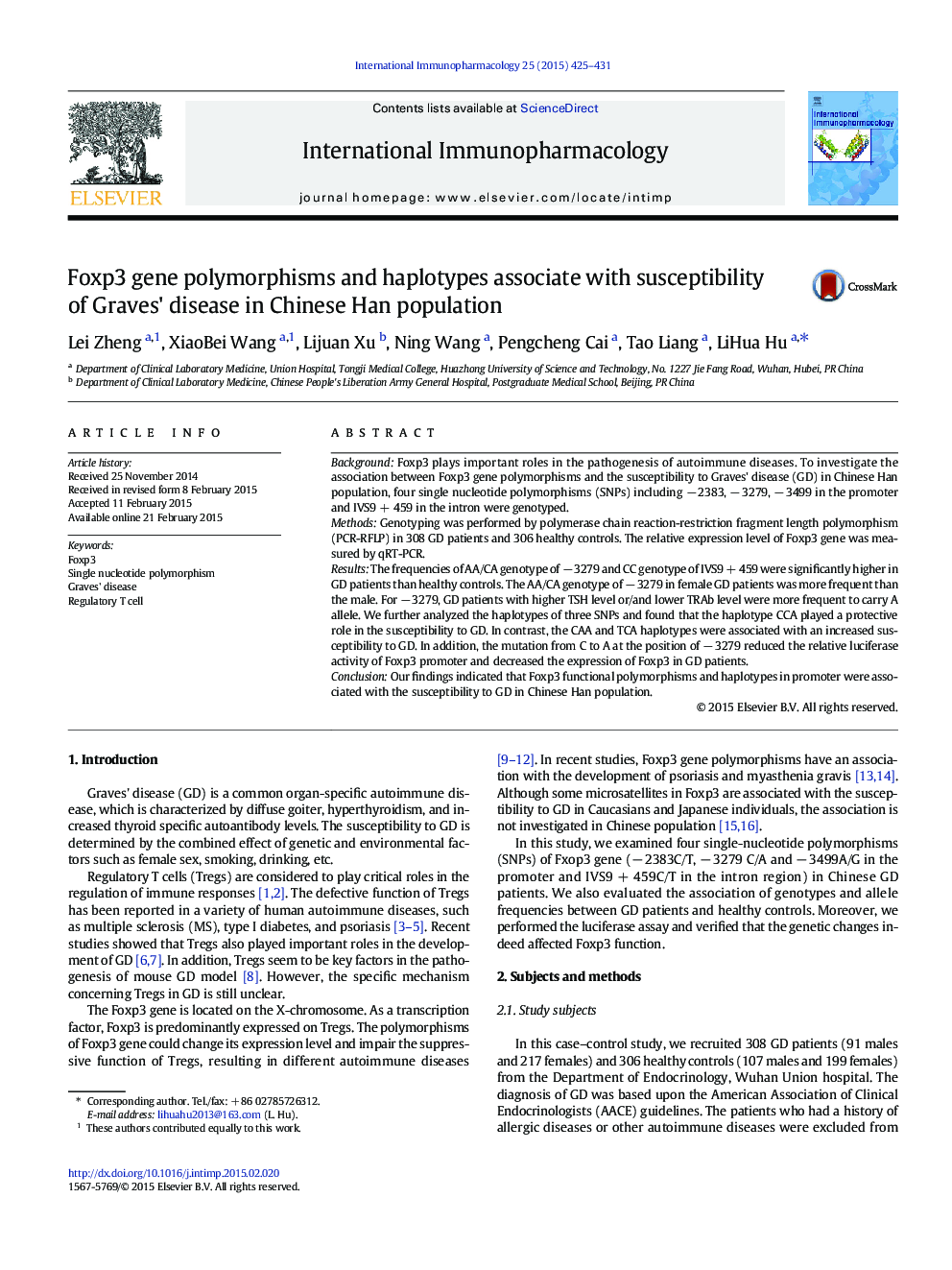| Article ID | Journal | Published Year | Pages | File Type |
|---|---|---|---|---|
| 2540593 | International Immunopharmacology | 2015 | 7 Pages |
•The association between Foxp3 and GD in Chinese population is first studied.•A allele of − 3279 is a risk factor to GD.•There is an association between − 3279 and the serum biochemical indexes.•The CAA and TCA haplotypes are associated with an increased risk of GD.•The mutation from C to A at position of − 3279 affects Foxp3 function.
BackgroundFoxp3 plays important roles in the pathogenesis of autoimmune diseases. To investigate the association between Foxp3 gene polymorphisms and the susceptibility to Graves' disease (GD) in Chinese Han population, four single nucleotide polymorphisms (SNPs) including − 2383, − 3279, − 3499 in the promoter and IVS9 + 459 in the intron were genotyped.MethodsGenotyping was performed by polymerase chain reaction-restriction fragment length polymorphism (PCR-RFLP) in 308 GD patients and 306 healthy controls. The relative expression level of Foxp3 gene was measured by qRT-PCR.ResultsThe frequencies of AA/CA genotype of − 3279 and CC genotype of IVS9 + 459 were significantly higher in GD patients than healthy controls. The AA/CA genotype of − 3279 in female GD patients was more frequent than the male. For − 3279, GD patients with higher TSH level or/and lower TRAb level were more frequent to carry A allele. We further analyzed the haplotypes of three SNPs and found that the haplotype CCA played a protective role in the susceptibility to GD. In contrast, the CAA and TCA haplotypes were associated with an increased susceptibility to GD. In addition, the mutation from C to A at the position of − 3279 reduced the relative luciferase activity of Foxp3 promoter and decreased the expression of Foxp3 in GD patients.ConclusionOur findings indicated that Foxp3 functional polymorphisms and haplotypes in promoter were associated with the susceptibility to GD in Chinese Han population.
